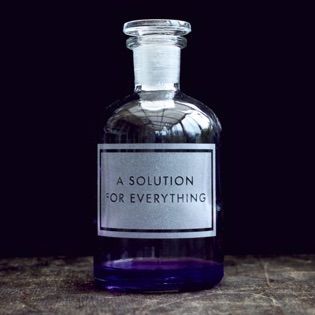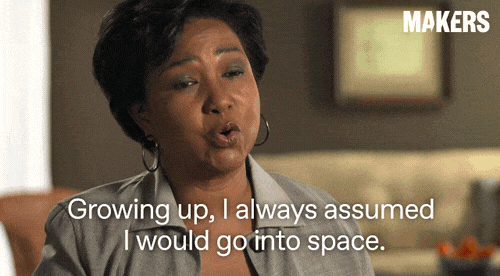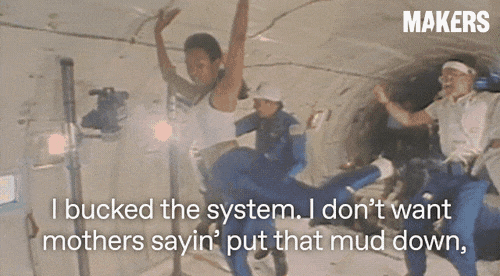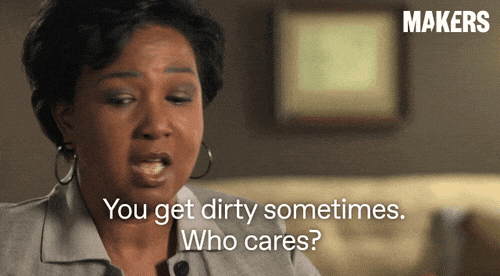These Are Cool
These are cool
MBTI Types As Bottles:
ENFP:

INFP:

ESFP:

ISFP:

ESFJ:

ISFJ:

ENFJ:

INFJ:

ESTP:

ISTP:

ESTJ:

ISTJ:

ENTP:

INTP:

ENTJ:

INTJ:

More Posts from Ship-happenss and Others

Messier 20 and 21 via NASA https://ift.tt/2BI0maN
What are the general stereotypes of the types?
ISFJ: Book nerd. Helpful. Shyest of the shy. Hipster blog.
ISFP: Aesthetics are Important. Wanderlust. Tears of joy.
ISTJ: Organization. Always serious. Puns and sarcasm.
ISTP: Can fix things. Probably a mechanic. Will fight you.
INFJ: Existential. Knows what you’re thinking. Probably sad.
INFP: Always crying. Takes everything personally. Artsy. Ideas.
INTJ: No emotions. *Trips*. Probably planning your murder. Music.
INTP: Procrastinates. Knows a lot about space. Hates decisions.
ESFJ: Mom. Bakes. Greek life is their life. Always looks nice.
ESFP: *Flirts*. Parties and dancing. Superficial. Small talk.
ESTJ: Ambitious. Probably your boss. Best at making plans.
ESTP: High school football player. Likes parties. Best at gym.
ENFJ: The Protagonist. Advice central. Never wrong. Helps everyone.
ENFP: Brain is on drugs. “Fairies are real fight me”. Bad at math.
ENTJ: Intimidating. Always wins fights. Non-stop. No free time.
ENTP: Pyromaniac. Class clown. Thinks they’re the best. Awkward.



“Growing up, I always assumed I would go into space. But I knew full well that people expected me to behave a certain way. I bucked the system. I don’t want mothers sayin’ ‘put that mud down, stop doing the because you’re going to ruin your dress.’ You get dirty sometimes. Who cares? You cannot do some of these things and keep your hair all nice.”—Mae Jemison
Today’s TechMAKER reached for the stars and then some. Mae Jemison saw the gender and racial discrimination in space exploration, but that didn’t stop her from becoming the very first African-American woman in space.
You can see our full interview with Mae Jemison over on MAKERS.
Guide to Zero Waste as a college student.
I know. Just the thought of it made me scared. When I first started a year ago, I dived head first and told myself if I didn’t start now, I would never start. It didn’t matter if I would make a mistake, I had to start and then learn from my mistakes.
Boi did I make a lot of mistakes. But I learned. Here are some steps you can take to become zero waste.
1. Look at your trash.
What is in there? Plastic bottles? Straws? Jars? Wrappers? Foam containers of that one take away? Take a look at your trash and determine why you are producing that amount of trash.
2. Plan.
After figuring out what’s in your trash think about what you can do to stop making it. I like to guide myself with these three questions:
Do I really need this in my life? If not, then it is a good time to stop buying/ using said thing.
If I do need it, is there an eco-friendly alternative? Do they sell it or should I look for a DIY-option? The important thing is not to get stuck just because you can’t get it!
What habits can I adapt to make transitioning easier for me?
3. Set goals.
At first, I dived right into it. Which was probably not the best option. After some months I realized it would be better if I took one step at a time. Goals are a good way to get you there but the only way goals can actually work is of they are smart. These are some of the goals I had when I started.
Every day I must fill my reusable water bottle and take it everywhere with me. I am not allowed to drink from any plastic cups, straws any other form of packaging that is recyclable but not necessarily reusable.
Every day I must go out with my reusable straw and my utensils. In order not to forget them, I have to always keep a pair on each of my bags.
4. Keep track.
I will admit: I am not perfect. But keeping tracks of what I do with zero waste helps me see what I can do better. And that’s what this movement is. What can we do to get a bit closer to producing no waste? Some people get discouraged but this personally encourages me to work harder.
So are you planning on becoming zero waste? Are you already part of the movement? Let me know!
-Shirou
Jupiter's Great Red Spot Getting Taller as it Shrinks
Discover how a team of our scientists has uncovered evidence that Jupiter’s Great Red Spot is growing taller as it gets smaller.
Though once big enough to swallow three Earths with room to spare, Jupiter’s Great Red Spot has been shrinking for a century and a half. Nobody is sure how long the storm will continue to contract or whether it will disappear altogether.

A new study suggests that it hasn’t all been downhill, though. The storm seems to have increased in area at least once along the way, and it’s growing taller as it gets smaller.

Observations of Jupiter date back centuries, but the first confirmed sighting of the Great Red Spot was in 1831. But until then, researchers aren’t certain whether earlier observers who saw a red spot on Jupiter were looking at the same storm.

Amy Simon, an expert in planetary atmospheres at our Goddard Space Flight Center in Greenbelt, Maryland, and her team traced the evolution of the Great Red Spot, analyzing its size, shape, color and drift rate. They also looked at the storm’s internal wind speeds, when that information was available from spacecraft.

This new study confirms that the storm has been decreasing in diameter overall since 1878 and is now big enough to accommodate just over one Earth at this point. Then again, the historical record indicates the area of the spot grew temporarily in the 1920s. Scientists aren’t sure why it grew for a bit.

Because the storm has been contracting, the researchers expected to find the already-powerful internal winds becoming even stronger, like an ice skater who spins faster as she pulls in her arms.

But that’s not what is happening. Instead of spinning faster, the storm appears to be forced to stretch up. It’s almost like clay being shaped on a potter’s wheel. As the wheel spins, an artist can transform a short, round lump into a tall, thin vase by pushing inward with his hands. The smaller he makes the base, the taller the vessel will grow.

The Great Red Spot’s color has been deepening, too, becoming is a more intense orange color since 2014. Researchers aren’t sure why that’s happening, but it’s possible that the chemicals coloring the storm are being carried higher into the atmosphere as the spot stretches up. At higher altitudes, the chemicals would be subjected to more UV radiation and would take on a deeper color.

In some ways, the mystery of the Great Red Spot only seems to deepen as the iconic storm gets smaller. Researchers don’t know whether the spot will shrink a bit more and then stabilize, or break apart completely.
For more information, go here/watch this:
For the full story, click HERE.
Make sure to follow us on Tumblr for your regular dose of space: http://nasa.tumblr.com.
“…and we drink our coffee and pretend not to look at each other.”
— Charles Bukowski, Luck

them: what languages do you know?
me: visual basic, python and a bit of java
them:
me:
them:
me: ...oh you meant like speaking?
Actual advice on how to study for engineering courses from a first year student
Okay so I just finished my first semester in university and lets just say I’ve got to change my whole learning/studying style to be able to survive here. Here are some of the things I’ve learnt to do and will be doing in second semester:
1. Start backwards:

I highschool, you try to learn the subject by going to class, listening to the teacher, then going home, reading the textbook, then doing the homework, then making notes, then studying for the final. In engineering, you have to do this backwards: You will realize that you are going to be basically teaching yourself the content one way or another soon before the finals, so better start now. First, go through the past exams and past papers - make a list of all the major topics covered (example: if in an electrical circuits course, a question on a past final exam is “find the equivalent circuit using thevenin’s theorem” then write Thevenin’s theorem as a topic to be learned). Then go on youtube and find videos that explain each of these topics to you and make rough notes on these topics. (Reblog if you want me to make a master list of all the youtubers that teach engineering really well). Then go through he textbook and find sample questions not he theorem/topic you learnt off of youtube, and solve them. Then write your doubts in a notebook. Then go to class and have two notebooks open : one where you are taking notes of what the prof is saying, and one which has your practice problems solved, and see if the prof clarifies your doubts in the lecture. The lecture should be review of what you learnt at home!!!! Then, after class go to the prof and clarify any doubts. Then go home and make final notes on the topic. I like to make notes on cue cards (more on this later). Then go back to the final exam and see if you can solve the problem.
2. Make cue cards:

I like to get index cards and write a short note on how to solve each type of question I am likely to see on a final exam on each question card. Example: one cue card for “how to find resistance using wheatstone bridge” . I link the cue cards with a clip and its easier to carry the around and study.
3. Get pretty notebooks and organize your stationary. Its easier to stay focused when everything is pretty.

This is gorgeous
Winter ice floes down streams in Iceland
-
 lisablack000 liked this · 9 months ago
lisablack000 liked this · 9 months ago -
 vlgrosie liked this · 1 year ago
vlgrosie liked this · 1 year ago -
 nistfilipcuver liked this · 1 year ago
nistfilipcuver liked this · 1 year ago -
 jjaybles liked this · 2 years ago
jjaybles liked this · 2 years ago -
 candystealer242 reblogged this · 2 years ago
candystealer242 reblogged this · 2 years ago -
 candystealer242 liked this · 2 years ago
candystealer242 liked this · 2 years ago -
 fuyupolys liked this · 3 years ago
fuyupolys liked this · 3 years ago -
 ultra-strawberry-lemonade reblogged this · 3 years ago
ultra-strawberry-lemonade reblogged this · 3 years ago -
 ultra-strawberry-lemonade liked this · 3 years ago
ultra-strawberry-lemonade liked this · 3 years ago -
 art3mis133233 liked this · 3 years ago
art3mis133233 liked this · 3 years ago -
 tastlessaxolotl liked this · 3 years ago
tastlessaxolotl liked this · 3 years ago -
 justarandompersoniguess liked this · 3 years ago
justarandompersoniguess liked this · 3 years ago -
 significantquiet liked this · 3 years ago
significantquiet liked this · 3 years ago -
 wisewordsmouse liked this · 3 years ago
wisewordsmouse liked this · 3 years ago -
 little-ketro liked this · 3 years ago
little-ketro liked this · 3 years ago -
 nerdybookworm25 liked this · 3 years ago
nerdybookworm25 liked this · 3 years ago -
 kiraneru-loliluxyt liked this · 3 years ago
kiraneru-loliluxyt liked this · 3 years ago -
 sybyl liked this · 3 years ago
sybyl liked this · 3 years ago -
 httpstoned liked this · 3 years ago
httpstoned liked this · 3 years ago -
 rptide liked this · 3 years ago
rptide liked this · 3 years ago -
 grace-is-not-here liked this · 3 years ago
grace-is-not-here liked this · 3 years ago -
 enthusiasticallydeadinside liked this · 3 years ago
enthusiasticallydeadinside liked this · 3 years ago -
 evangelinegenevieve liked this · 3 years ago
evangelinegenevieve liked this · 3 years ago -
 melimelo05 liked this · 3 years ago
melimelo05 liked this · 3 years ago -
 ajstudio reblogged this · 3 years ago
ajstudio reblogged this · 3 years ago -
 artsy-jandi liked this · 3 years ago
artsy-jandi liked this · 3 years ago -
 thelastofcats1 liked this · 3 years ago
thelastofcats1 liked this · 3 years ago -
 ainslee liked this · 3 years ago
ainslee liked this · 3 years ago -
 plsmarrymehange liked this · 3 years ago
plsmarrymehange liked this · 3 years ago